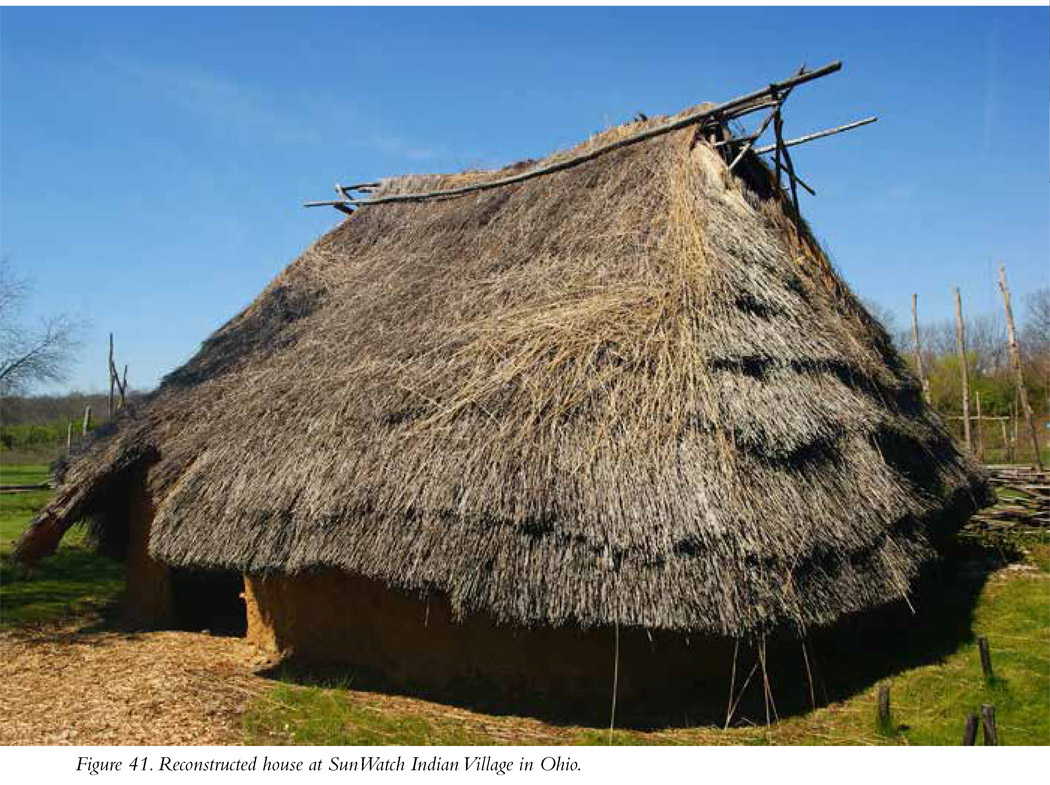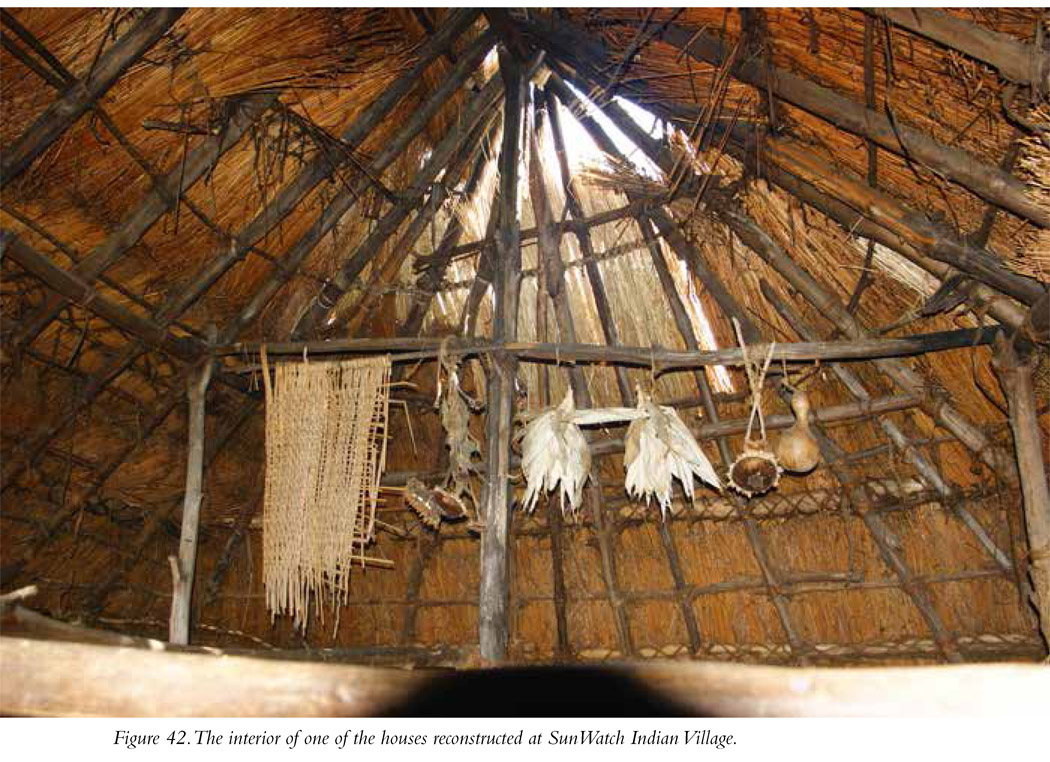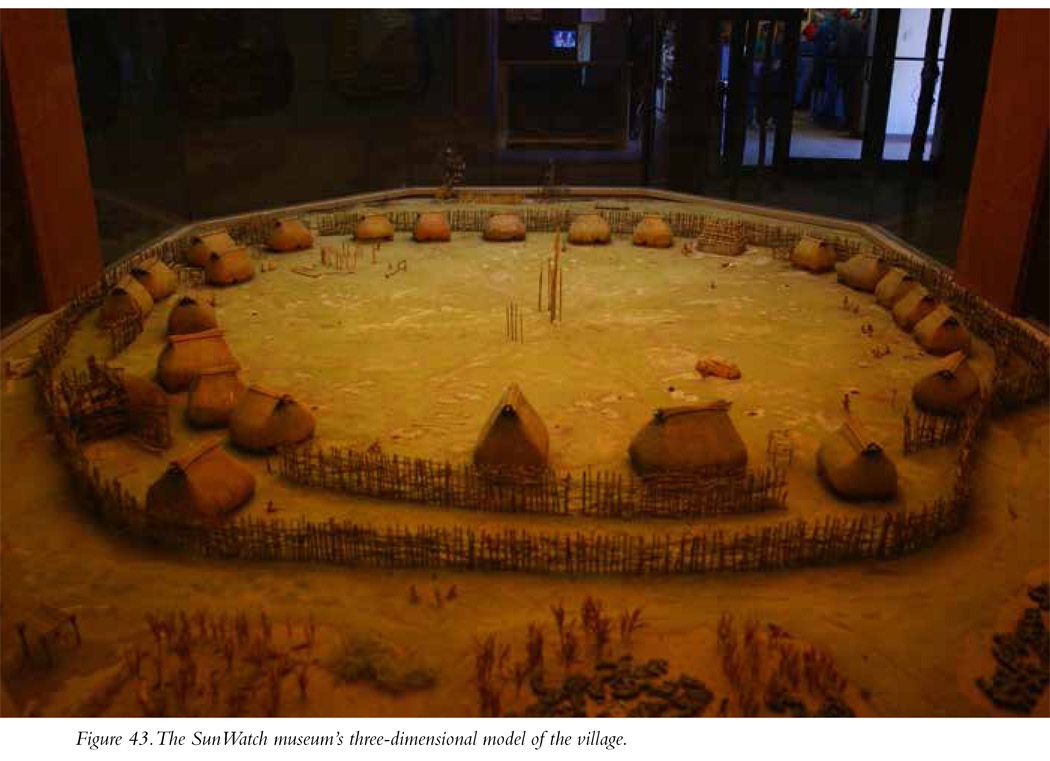
Dayton, Ohio
Journal Entry
April 23, 2009
Have you ever visited one of the many outdoor “living history museums” scattered across the United States? Here in New England we have two of the finest: Old Sturbridge Village and Plimoth Plantation, both in Massachusetts. Plimoth (the modern museum has retained the original spelling) is modeled of course on the historic village established by the Pilgrims in 1620. The modern version consists of a single lane along which the “residents” have constructed replicas typical of the early seventeenth-century houses in the historical village. There are gardens, an armory and meeting house, small pastures, and a palisade surrounding the village. If you walk outside of town, you’ll find a small Indian village with a couple of wigwams ostensibly inhabited by members of the Wampanoag tribe going about their daily business. One of the most interesting approaches at Plimoth is the fiction maintained by the “residents” that it is 1620 and you are visiting the actual seventeenth-century village. Those residents aren’t just random people. They take on the personae of the people who actually lived there nearly 400 years ago. Not docents or museum guides, instead you will encounter William Bradford, John and Priscilla Alden, and many other residents of the original Plimoth. These historical reenactors are very good at maintaining that fiction and rarely break character. I once had an interesting conversation with one of the inhabitants. After telling me he had come from England to live in the New World, the man asked where I had traveled from. Without thinking, I told him “Connecticut.” His response: “I know where that is, but it ain’t been discovered yet.”


Old Sturbridge Village has a more traditional approach to an outdoor historical museum. The houses, barns, offices, blacksmith shop, pottery shed, and mill buildings are for the most part authentic old buildings moved to OSV to create what amounts to a fictional nineteenth-century community. The employees are all actual docents with name tags and make no attempt to convince you they really are time-travelers from the past.
I bring up these examples because SunWatch Indian Village is another interesting approach to the outdoor history museum concept. SunWatch is a re-created 800-year-old Native American village, with houses, gardens, a plaza, and a palisade. The unique element of SunWatch is that it has been built on the actual footprint of the archaeological site whose excavation has allowed the accurate re-creation of the Native American village you can walk through today. It’s a very cool approach and a very cool place.

What You Will See
SunWatch is an 800-year-old village located along the Great Miami River. Based on its excavation, it was determined that SunWatch was a palisaded village with a handful of rectangular houses spread out across approximately 3 acres. Its population is estimated to have been about 250, and the community lasted only about twenty years. Based on the presence of a number of distinct ceramic styles, it has been interpreted that separate woman-based kinship groups called matrilineages, each with its own distinct pottery style, lived in the village. Burials were found within the palisade walls.
You will be able to walk around the 3-acre village and view and enter four reconstructed houses (Figure 41). From inside you’ll see the beautifully constructed roofs, interior walls, and partitions (Figure 42). Part of the palisade has been rebuilt, and structures not yet rebuilt are marked by wooden posts in the exact locations where they were found archaeologically.
There is a very nice on-site museum filled with artifacts actually found at the site. Some of the artwork produced by the ancient village’s residents is quite impressive. There’s also a re-creation of a dog burial excavated at the site; the dog’s human companions buried him in the same manner they might lay to rest a beloved family member. There’s a nice twelve-minute film about the site, some dioramas, a simulated dig, and plenty of artifacts.
Visually the site itself isn’t terribly impressive; there aren’t any monumental mounds, for example. But maybe that’s the point. SunWatch is an ordinary village that provides us with an extraordinary up-close and personal opportunity to see how regular people lived in western Ohio 800 years ago (Figure 43). That’s pretty great.
Why Is SunWatch Indian Village Important?
There are plenty of archaeological sites open to visitors but very few indeed where researchers have actually reconstructed the ancient community itself right there at the site. Most of the sites described in this book require quite a lot of imagination to paint a picture of the ancient community’s appearance. At SunWatch, you’ll need little more than open eyes and a good pair of walking shoes.
Another element to the importance of SunWatch is the fact that many elements of the place are effectively ongoing experiments in ancient technologies related to construction, cooking, planting, and tool making. Replicative experiments have long made an important contribution to archaeological analysis. There may be no better way to understand the processes by which ancient peoples provided the necessities of life than to attempt to replicate those processes in the here and the now. There is certainly no better way to gain an appreciation for the skills possessed by ancient peoples than to try to learn those skills yourself through a process of trial and error. How long did it take to make a stone arrow point, and how difficult was it to do so? Try it for yourself. How much shelter did an ancient SunWatch village house afford its residents? Are the replicas built today dry during driving rainstorms? How warm is a replica village house in the middle of a difficult and cold winter? How productive were the agricultural fields maintained by the residents of SunWatch? How productive are our modern replicas? Experimental archaeology can help answer these kinds of questions and provide direct insights into the lives and livelihoods of ancient peoples. As an ongoing experiment in the culture of an ancient people, SunWatch Indian Village may be making its most important contribution to our knowledge of the human past.
Site Type: Village
Wow Factor: ** The “wow” here resides not in any particular feature of the site but in the fact that the reconstructed buildings and palisade have been placed in the actual footprint of the remains of the original village site.
Museum: **** The SunWatch museum has amazing artifacts on display, all of which were recovered at the site. The reconstructed dog burial is touching.
Ease of Road Access: *****
Ease of Hike: *****
Natural Beauty of Surroundings: ***
Kid Friendly: ***** Kids will love being able to go inside the reconstructed houses. I have been to SunWatch a couple of times, and there are always replicative activities going on outside, including tending the Indian gardens and building and maintaining houses and the palisade.
Food: Bring your own.
How to Get There: SunWatch is located off I-75, a few minutes south of downtown Dayton in western Ohio. Take exit 51 off I-75 and go west on Edwin C. Moses Boulevard, which becomes Nicholas Road after you cross the Dryden Road/South Broadway Street intersection. Cross South Broadway and turn left onto West River Road. SunWatch is 1 mile south on West River Road.
Hours of Operation: Open Tuesday through Saturday 9 a.m. to 5 p.m.; Sunday noon to 5 p.m. Closed on Monday.
Cost: See website.
Best Season to Visit: Any time
Website: www.sunwatch.org
Designation: Private; National Historic Landmark